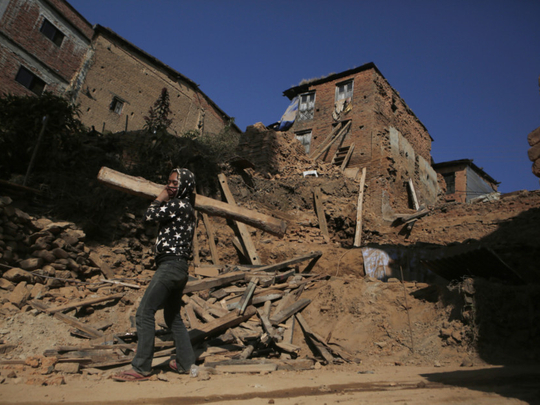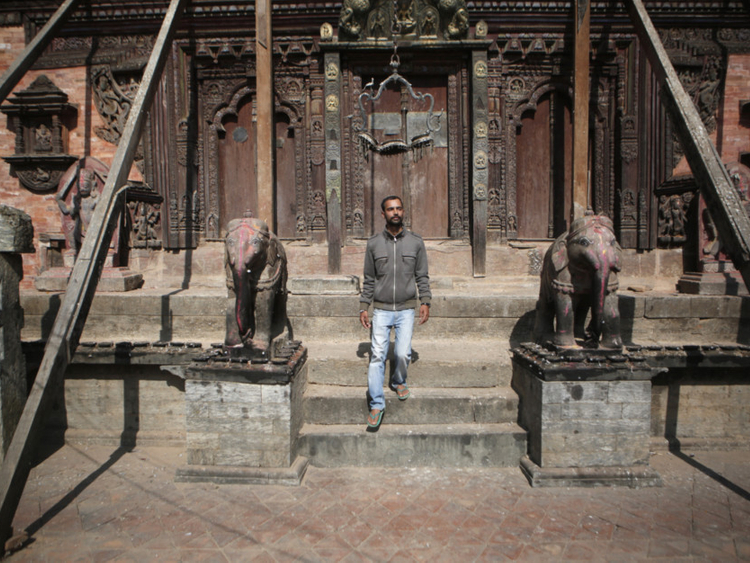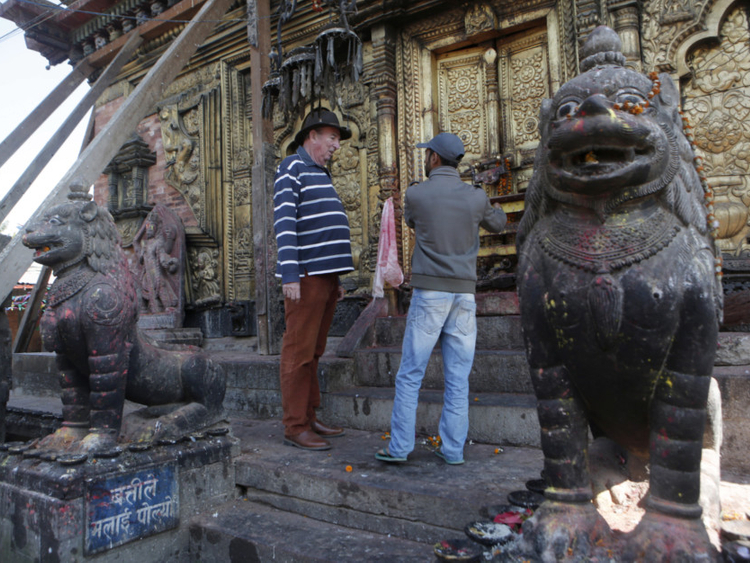
CHANGU NARAYAN, Nepal
When a 7.8 magnitude earthquake rocked Nepal last year, villagers in Changu Narayan ran up the steep rocky path that cuts through their town to their renowned temple. Seeing the piles of rubble, they figured their lives were over.
Less than two years later, the community is cleaning up their World Heritage Site themselves, and one of the world’s leading architects has taken on the recovery as his pet project.
“I see now our world coming back alive,” said Gyan Bahadur Bhadal, 61, one of many villagers who share responsibility for the temple’s upkeep.
In a country where locals say there are more gods than people and more temples than houses, Changu Narayan still manages to stand out among the ancient holy places. It’s believed to be the oldest Hindu place of worship in the country, its wooden walls intricately carved with hundreds of deities, perched atop a steep hill overlooking the Kathmandu Valley.
The 5th century temple is dedicated to the deity Vishnu, who locals say appeared there once. His image, in about a dozen incarnations, is carved into struts that hold up the roof. Stone lions with eagle heads guard the doors. Inside has long been a mystery: Only priests enter the two-tiered pagoda, and they don’t explore.
Doing the unthinkable
An April 2015 temblor that killed 9,000 people in Nepal also damaged details in Changu Narayan’s wood, stone and metal. A sharp aftershock one day later twisted the entire structure, knocking piles of bricks out of the walls, filling the courtyard.
Anish Bhatta’s family has been living and leading worship at the temple for 10 generations — some 325 years. After the earthquake, Anish did the unthinkable: He went all the way inside.
“We saw things we never imagined,” he said. “Statues as big as me, swords, so many sculptures, gold plated with big gems.”
Today the temple is guarded by military police, and propped up with questionable temporary beams.
British architect John Sanday, who led the World Monuments Fund restoration of Cambodia’s Angkor Wat, the largest religious monument in the world, fell in love with the place decades ago. After the earthquake, he came up the Changu path with trepidation.
“I was very emotional walking into this place. The whole of the courtyard was littered with rubble. I thought, ‘Come on, John, you’ve got to pull yourself together,’” he recalled.
But then Sanday noticed wooden supports exposed by the missing brick. He saw what looked like a bedrock foundation. And he decided that of the 600 historical temples, monuments and palaces damaged by the earthquake in Nepal, this one would be his project.
“Sure, it’s peanuts, a little temple, so why is it so special?” said Sanday. “The detail. The grace. It’s one of the few World Heritage Sites that hasn’t been completely destroyed by development.”
But what really drew him to step in as technical adviser were the people of this village.
Among tourists and pilgrims, Changu Narayan’s residents pray there at dusk, kneel before the deities, offer alms to the priests who stand duty at the door.
Complicated puzzle
Three people died and 100 homes were damaged in Changu Village, a 30-minute drive from downtown Kathmandu, during the earthquake. Like families in the city 20 kilometres away, the Changu community grieved, cried and cleaned up rubble.
But in the hilltop village the community did something else: With rags and water, little picks and brushes, they cleaned the ancient and exotic carved brackets and facades, cleaning and repairing, bit by bit, so they could resume their worship.
Now Sanday says their dedication is his inspiration.
He will not allow their culture to disappear with the damaged building.
Conserving an ancient building means solving a series of incredibly complicated puzzles. Rotted or mice-chewed timbers must be replaced. And there’s $300,000 to raise.
For starters, with $30,000 of German support, he helped the community rebuild one of Changu’s shrines, the size of a little guardhouse. Now he’s looking at the larger temple a few metres away. “This is a place we can save, no doubt,” said Sanday. “The people here will make sure of that.”
— AP















